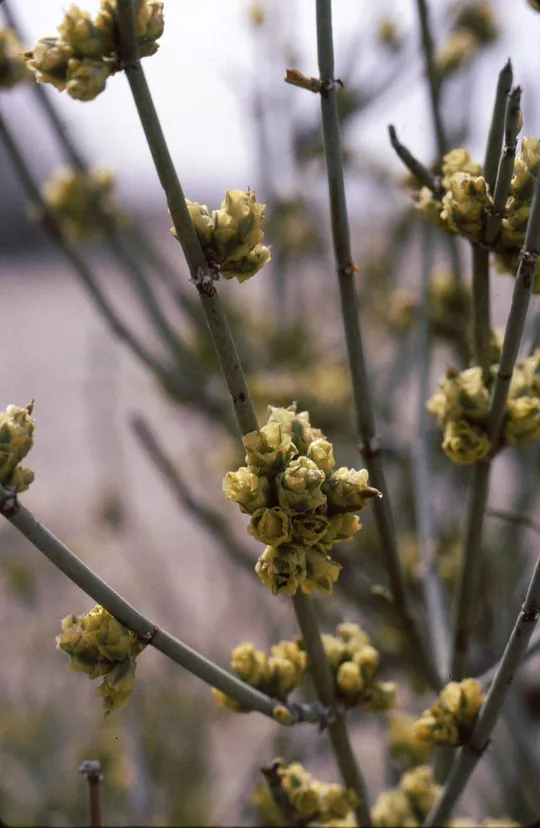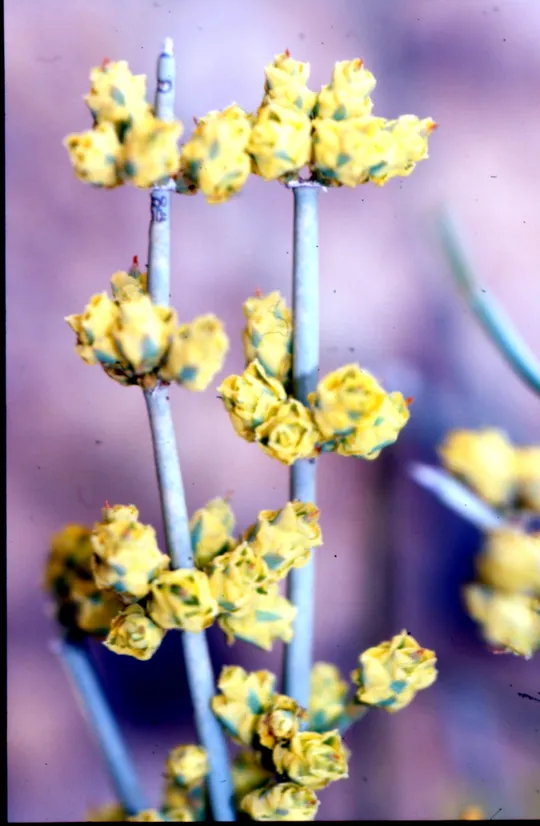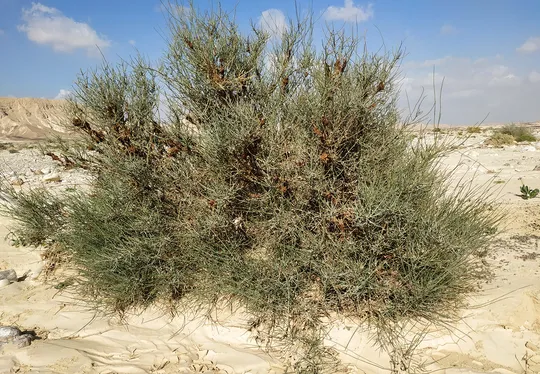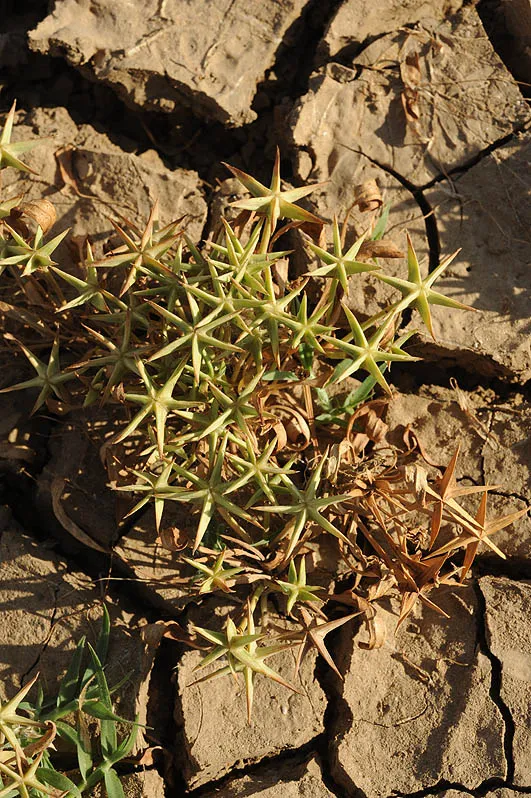White Shrubby Horsetail
Ephedra alata




Ephedra alata has been found so
far only in Wadi Paran in the southern Negev. It is estimated that there are
two sites in Israel. The Wadi Paran sites are located in its western section,
which is closer to the border with Egypt and not to the Arava: one site, known
since the 1950s, is at the meeting point of Wadi Sagi with Wadi Paran.
According to Aaron Rotenberg there are five clumps of shrubs growing there. The
second site was discovered by A. Rotenberg in 1999 along Wadi Paran close to
the Egyptian border road, at an altitude of 600 meters. A single male specimen of
Ephedra alata was found there. The species is locally common in
the Sinai, in the Paran-Kuntilla flats across the border, and the single specimen
found by A. Rothenberg near the border could be considered the "edge"
of the large population in the Kuntilla flats. The monograph of the genus notes
and emphasizes that "the plant is rare throughout its range."
In Israel, Ephedra alata
grows on broad gravelly sandy beds of large wadis that drain extensive areas.
In Iraq, Arabia and the Sahara, it is found in sandy deserts and Hatrurim formations
rich in gypsum. In Egypt it forms sand mounds and grows on sandy flats and in
sandy wadi beds. Its ability to grow in diverse habitats is characteristic of
desert shrubs adapted to a broad ecological range in the extreme desert. Some examples
of this phenomenon are: Retama raetam, Thymelaea hirsuta, Ochradenus
baccatus, Agathophora alopecuroides and Acacia species. It grows
at altitudes of 400 to 700 meters in Israel and up to 900 meters in the Sinai
Peninsula.
Ephedra
is an ancient genus in the Ephedraceae family, which belongs to the Gymnospermae. Globally
there are approximately 40 species that are found on most continents particularly
in arid and rocky habitats. The genus center is in the steppes of Iran and
Afghanistan on one hand and in the North America steppes on the other. Thirteen
species grow in the Andes in South America, but no species are known from
Australia. Ephedra species contain the alkaloid Ephedrine in their stems
that is used in drugs against various diseases, particularly for treating asthma
and respiratory diseases. Ephedrine has been used as a medicine in China for
5000 years.
Ephedra
alata belongs to a section of five species characterized by a
winged dispersal unit. These are vicarious species that replace each other in
different geographical areas from west to east. E. alata
alenda grows in the Western Sahara. Two species grow east of the E. alata range in
Central Asia: E. strobilacea in Iran, Afghanistan
and the steppes of Kazakhstan and E. przewalskii
further east in Kyrgyzstan down south to Lake Baikal. E. alata is the most arid
species in the genus, which grows in the world's most extreme deserts in the Sahara
and the Arabian Peninsula, in areas with an annual precipitation below 35 mm.
·
The two Ephedra alata sites are known only since the 1990s and there is no information
available on Negev sites from previous periods.
·
Only about 20 specimens
were observed in Wadi Paran in 2010 (Beni Shalmon). There is a lack of
information about long-term population size trends.
·
The population
is threatened by extinction because of its small size and random effects.
·
The sites are
not located in a nature reserve and are not included in the Negev Highlands
Reserve.
·
E. alata does not appear other red plant lists.
Ephedra alata sites should be
marked and signposted and the individuals should be subject to long-term
monitoring.
Ephedra alata grows in the
eastern part of the Libyan Desert and in the deserts of Egypt, Sinai, Israel,
western Jordan, northern Arabia and the desert part of Iraq.
Ephedra alata
is a shrub of large wadis in the extreme southern Negev desert. It is extremely
rare in Israel and is found here at the northern edge of its geographic
distribution.
Current Occupancy Map
| 1000 squre meter pixel | 5000 squre meter pixel | 10000 squre meter pixel | |
|---|---|---|---|
| number of observations | 0 | 0 | 0 |
| in total pixels | 0 | 0 | 0 |
| Family | Ephedraceae |
| Classification | On the endangered species list |
| Ecosystem | Desert |
| Chorotype | Saharo-Arab |
| Conservation Site | Wadi Paran near the meeting point with Wadi Sagi |
| Rarity |
1
5
6
|
|---|---|
| Vulnerability |
0
0
4
|
| Attractiveness |
0
0
4
|
| Endemism |
0
0
4
|
| Red number |
1
3.2
10
|
| Peripherality | S |
| IUCN category | DD EW EX LC CR EN VU NT |
| Threat Definition according to the red book | Vulnerable |
 Based on:
Based on:






